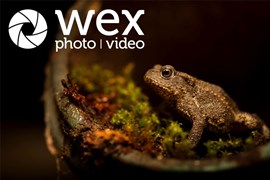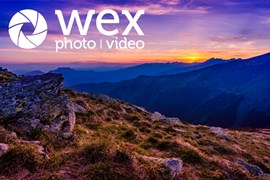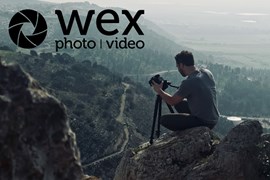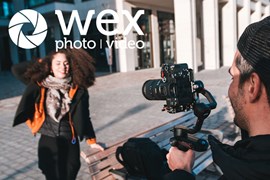
What’s the best camera for wildlife photography? What lens should I use? Building a wildlife photography kit bag is all about picking the right tools for the job. When you’re out in the wild, you don’t want to be carrying more than necessary, and with wildlife being one of the most challenging subjects to photograph, you don’t want to invest money in a camera or lens that isn’t going to be up to it.
To help you build the perfect wildlife photography kit bag, we’ve enlisted the help of wildlife photographer and Wex ambassador Tom Mason. We’ve delved into his kit bag to find out all the essentials a wildlife photographer needs, from big decisions like choice of camera and lens to the vital extras you may not have considered.
So, let’s get to it!
What is the best camera for wildlife photography?
Tom uses: Nikon Z9 (check out his early impressions review of the Z9 here)
“The reason I have this is that it’s simply the best combination of all the features I look for.”
“For me, resolution is actually quite a high priority. I want to deliver good-quality files, I want the details to be really, really nice if I’m going to print big. So the Z9 and its 45 megapixels are pretty brilliant for that.”
“There is a trade-off between resolution and ISO performance. For my style of shooting, I don’t push the ISO that high. I rarely go above ISO 3200, because I want the best quality I can get, and if the light’s crap, it’s probably not going to be a great picture anyway. If you go for a lower-resolution camera, 16-20 megapixels, you get much better high ISO performance, which is good if you’re going to work in darker conditions. Also, if you’re just starting out, it’s maybe easier technique-wise to go with something lower-resolution, especially when you’re combining it with a long lens”
“Autofocus speed is key. You want it to be highly reliable. I also like to be able to program the camera body, which is why I go for professional bodies rather than smaller ones – there are more buttons to program to different modes. For example – I can have single-point AF as the rear-button standard, and then press my Fn button to activate a group mode with tracking, without having to take my eye off the viewfinder. When you’re photographing wildlife, having to move around the camera, and take your head out from behind it, creates movement that your subject will see and get spooked by. You want to be as still as possible.”
“I never used to consider shutter noise, because we didn't have the option of not having it. But now, working with shyer subjects, I find that my Z9 being completely silent is amazing – I definitely get longer with my subject. And especially if, like me, you do a lot of remote camera work where you’re putting the camera very near the subject and using a wide angle. It’s a game-changer for that.”
“Weather sealing is a big deal. Construction-wise, you want the camera to be built like a tank. You’re going to drag it around to places that are cold, wet and sandy.”
“Frames per second is another consideration. If there’s a moment when you’ve got something running towards you, being able to fire off fifteen frames rather than three is a major benefit. But it’s not always that important if you’re picking your shots, as you should be.”
Key points:
- High resolution is good for printing, while lower resolution nets you better high-ISO performance, and is more forgiving.
- Fast autofocus is vital, and a body with programmable buttons is helpful.
- A silent shutter (think mirrorless) can be handy.
- A durable, weather-sealed camera body is essential.
- Fast burst speeds (frames per second) can be useful.
- Pro-level bodies will give you everything you need. If you don’t have the budget for the latest versions, buying older cameras second-hand is a great way to get value for money.

What lens is best for wildlife photography?
Tom uses: 300mm f2.8, 35mm, 24-70mm
“I love the 300mm f2.8. It’s a very good compromise between keeping my distance and framing my subjects closer. It's pretty comfortable to carry around all day, and I can get a beautiful, clean portrait with no background whatsoever. And of course, because it’s an f2.8, I can work all the way down to the last ten minutes of the day. That's fantastic. Again, if we’re talking second-hand, you can pick up a Canon or Nikon 300mm f2.8 for less than a grand. And it’s a hell of a lens for that price.”
“For those starting out, a 100-400mm or a 200-500mm can be a good choice. But I’ve always suggested a 300mm f4, because I think teaching people to use a prime lens starts a really important process of not only becoming a better wildlife photographer, but becoming a better photographer in general. Not only do you have to think about where you want to position yourself, but you've also got to plan the shot and how it's going to look. You’ve got to get to know your subject and your focal length. So I think a prime is a good thing to pick up if you want to up your game – it makes it harder, but makes you better in the long term.”
“For wide-angle shots on a remote, I use anything from a 17mm to a 24-70mm, but the main thing I’m looking for is a very short close-focus distance. Sometimes older lenses have better close-focus than newer ones, though the new Nikon Z 17-28mm is on my purchase list, because it has a 0.19m close-focus distance. That’s actually mental.”
“But I use a 35mm prime a lot of the time. I find it a very natural focal length to take pictures. I think with an ultra-wide, you tend to slam it as wide as it goes and get as close as possible to your subject, and the background kind of falls off a bit. You lose the connection between subject and background.”
“A 24-70mm lens is useful for storytelling. If I’m doing photojournalism work, photographing people and wildlife, then I’ll take that too.”
“But the important thing really is to think about what you want to carry. I choose day-to-day what I’m going to shoot. I’m rarely lugging my big telephoto as well as a whole bag of other equipment, and if I want to remote-shoot wide-angle stuff, I’m probably in the wrong position to capture anything else. So understanding what you’re going to take on what day – I’d say that’s key.”
“You may want to consider teleconverters for extra reach. In my view, teleconverters are great – if you’re already using the highest-quality glass. But if you’re using a lens that isn’t the best, and you put a teleconverter on it, you’re only going to get more frustrated. So save the teleconverter for your best lenses.”
Key points:
- Zoom lenses are great for convenience, but if you’re serious about improving your technique, consider a telephoto prime.
- Around 300mm is a good, balanced focal length
- f2.8 is great, and f4 is workable
- If you plan to use a remote trigger, prioritise close-focus distance. A 35mm prime may get you better pictures than an ultra-wide zoom.
- For more journalistic, storytelling images (i.e. if you’re visiting a bird sanctuary or interacting with tame animals) a 24-70mm lens will work well.
- Plan what you want to shoot on what days, rather than trying to carry around everything at all times.
- Teleconverters, if used, should be paired with the highest-quality lenses possible.

Camera support
Tom uses: Gitzo 4 Series tripod, ball head, gimbal
“Always have a tripod. People try to argue nowadays that because we have in-body stabilisation, it negates the need for a tripod. That’s absolute crap. I just did a video about this on my YouTube channel – a tripod lets you keep a camera in a completely static position, looking at a precise point. If you’re waiting for a subject, you might be waiting five hours or even more. You’re never going to hand-hold that – just use a tripod!”
“A tripod means you’re going to get the best out of your camera and lenses, especially if it’s a long focal length like a 600mm. You’re going to be more comfortable spending a lot of time waiting. And you can experiment – you can use longer shutter speeds to make different kinds of pictures that people just can’t get if they’re hand-holding and sticking to 1/2000sec. That gets boring after a while.”
“I always use my Gitzo 4 Series tripod. I have a large 4 Series ball head, and if I’m doing a mixture of stuff like wildlife and landscape, I’ll take that. But if I’m just shooting with a big tele lens, I’ll put a gimbal on it.”
Key points:
- A good, sturdy tripod is essential.
- A large ball head will give you shooting flexibility.
- If you’re using bigger lenses, consider a stabilising gimbal.

Camera bag and clothing
Tom uses: Lowepro Whistler 450 backpack, GORE-TEX waterproof jacket, Muck Boots
“One of the big things to look for in your wildlife camera bag is that you want extra space. A lot of these camera bags just seem to fit camera gear, and that's not necessarily perfect for wildlife photography. You want space for extra clothes, for a flask, and for any other stuff that’s going to keep you comfortable outside. You want a bit more space than you absolutely need.”
“I have so much money invested in coats. They are probably, after my cameras, the most important thing I own, because if you’re sitting outside for six hours and you start to get cold, what happens? You go home. So I would say you need a nice GORE-TEX waterproof jacket, and then just good base layers and waterproof trousers. I also like trousers that have knee pads – this has been a recent discovery over the last couple of years, but it makes it so much more comfortable to crawl around on the floor.”
“Shoe-wise, in winter I prefer my Muck Boots – they’re neoprene-lined, and can go down to -40° and keep your feet warm no matter how long you’re outside. They’ll also let you wade up to your knees, which can be very handy. But otherwise, if I’m walking anywhere, a good pair of walking boots will do fine.”
Key points:
- A camera bag should have room for more than just photo gear
- An insulated coat is essentials
- Get waterproof trousers with kneepads
- Insulated boots are best in winter.

Other essentials
Tom uses: Nikon Monarch HG 8x30 binoculars, Pocket Wizard remote trigger, good memory cards, USB-C power bank, emergency supplies – and a chocolate bar!
“Something that should arguably be first on the list is a really decent pair of binoculars. For tracking down your subject, for spending hours scanning the horizon line, having a good pair of binoculars is so key. I use the Nikon Monarch HGs 8x30. I love them. The reason I like the 30s rather than the 40s is that they’re much smaller, so they fit in the camera bag much more easily.”
“For remote trigger work, I use Pocket Wizards. They’re the industry standard and are very reliable. This is an area where, like with a tripod or a backpack, if you buy the right thing first time, you’ll save money in the long term, because it’ll just last.”
“Buy the best memory cards you can afford. You don’t need the very best, just a couple of really good ones. Most days, you won’t shoot more than the first card, but sometimes you will. I have big cards because the Z9 shooting 45MP at 20fps just eats data. I think I’ve gone through more storage in the last year than I did in the previous five years.”
“Sometimes I take my little USB-C power bank. I can lob it into the Z9 if I need to, but to be honest, it’s more for charging my phone. I took the Z9 to the Arctic and went four days without needing a charge. It was amazing. One thing I’ve noticed is that a lot of people leave their camera on during a shoot, but the Z9 starts up instantly, so there’s no reason not to turn it off.”
“Safety equipment is also a priority. I always carry a small first-aid kit. As mentioned, my phone is always fully charged, and I have mapping on it, as well as on my GPS watch. I usually have emergency space blankets and a bivvy bag. This means that if something ever were to happen, you could crawl into it and wait for someone to come along – but remember, it’s not just about you. If you’re in the middle of nowhere and someone else – like a hiker or a dog-walker – has an accident, it means you can help them. You’re carrying a big bag of photo gear – what difference is a little first aid kit and bivvy bag going to make?”
“A flask and some food are important to remember. And lastly, I always like to lob some of my favourite chocolate bars in there. Not only in case you forget your normal food but also to have as a little celebration. Had a good day, or nailed a good picture? Have a nice chocolate bar!”
Key points:
- Get a decent pair of binoculars – ideally not too large – for scanning the habitats.
- Get the best memory cards you can afford.
- PocketWizard remote triggers will last a long time.
- A USB-C power bank is handy if your phone is unreliable
- Try not to waste your camera battery.
- Take emergency supplies like a first-aid kit and space blankets – not just for yourself, but for others too.
- Bring something to eat and drink – and don’t forget a chocolate bar as a little reward!
Secondhand and used
While there are specific items of gear, one thing that’s especially worth thinking about with wildlife photography is how much great gear you can get on the used market.
“Second-hand is such a great place to go not only for the cameras but also for the lenses,” Tom says. “In terms of the big pro telephotos, if you go out and buy a brand new 400mm f2.8 in Z-mount, you’re looking at almost fourteen thousand pounds.”
Obviously, the Nikon Z lens is a fantastic optic, but it’s overtly designed for top-end professionals, and the vast majority of photographers are not going to have that kind of money available. But go into the second-hand market, and suddenly your options expand in interesting ways.
“Look at a 300mm f2.8, or a 500mm f4 – you can pick one up second-hand any day of the week for less than £3,500,” Tom says. “And for most people, that’s going to be an incredible lens for the next fifteen years of photography.”
And the same goes for cameras. Tom points to a former professional Nikon DSLR – the D3. This is a camera that would have cost more than £4,000 when it was released in 2007, and at the time of writing, there are three Nikon D3 cameras listed on Wex Used for a little over £300.
“A D3 is a hell of a camera to pick up for three-hundred quid,” says Tom.
An equivalent from another brand might be the Canon EOS 5D Mark II, which currently goes for around £333. Or, for a mirrorless option, the original Sony A7 can be picked up used for a little over £400. Full-frame mirrorless at that price is nothing to sniff at.
So, there we have it. A run-through of the best kit for wildlife photography! But keep in mind that it’s always worth trying to save some cash on the used market. If you're looking to upgrade, consider trading in your camera for Wex vouchers or cash!

Tips & Tricks
Buying Guides








